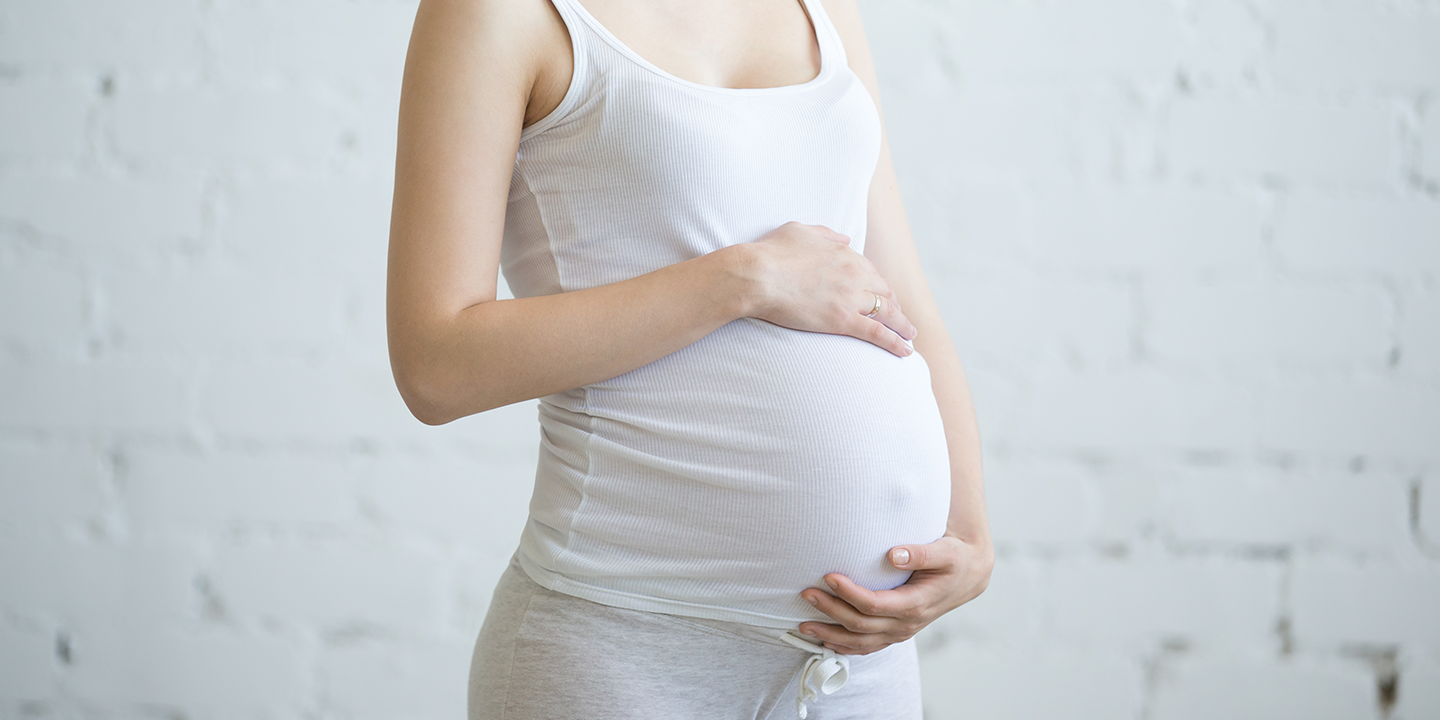
Although you may see signs earlier, you are officially pregnant in the third week of pregnancy!
When you’re three weeks pregnant, it’s the time when the sperm and egg come together. If the fertilization is successful and you have conceived, this is the week when your baby will start to form.
If you take a pregnancy test now, it might show a positive result. At three weeks pregnant, you’re in the first month of your pregnancy, and you still have eight more months to go before you can meet your baby.
As it is still very early, it’s possible that you may not even realize that you’re pregnant. Since conception has only occurred a few days ago, so it’s unlikely that enough time has passed for you to miss a period yet in the third week of pregnancy.
Let’s learn more about 3rd week of pregnancy symptoms.
In this Article
3 Weeks Pregnant – Baby Development
At 3 weeks of pregnancy, your baby has changed from a fertilized egg (called a zygote) into a cluster of approximately 100 cells. It is similar in size to a pinhead. This cluster is officially called a blastocyst.
Since it’s still very early in the pregnancy and your baby is tiny, you won’t have a visible 3 weeks pregnant belly or bump yet, although you may experience bloating. It’s common for many women not to show any signs of pregnancy until around 12 weeks, so you still have some time to go before you can see and appreciate your growing belly.
Shortly after fertilization, your small egg will begin its journey from the fallopian tube to the uterus. This journey typically takes about six days, so the process of implantation, when the zygote attaches to the uterus, will likely occur around the fourth week of pregnancy.
Related Blog: 8 Surprising Things Unborn Babies Usually Do In The Womb
Symptoms of Pregnancy at 3 Weeks
Are you wondering what pregnancy symptoms at 3 weeks will you be dealing with? During this time, you are still in the early stages of pregnancy and might experience various symptoms. Here are some common 3 weeks pregnant symptoms:
- Nausea
- Tender and Sore Breasts
- Abdominal Pressure
- Heightened Sense of Smell
- Metallic Taste In Mouth
- Implantation Bleeding
Each person’s body is unique, and symptoms can vary or appear at different times during this early stage. So, if you’re not experiencing any pregnancy symptoms week 3 yet, there’s no need to worry.
Week 3 Pregnancy – Few Tips to Follow
Here are some tips you need to follow during the third week for a healthy pregnancy:
- Eat Healthy
It’s important to have a healthy diet and consume the right nutrients and vitamins during the early stages of pregnancy. Your baby needs extra protein for growth, so aim for three servings of protein each day in the first few weeks. Additionally, make sure you’re getting enough calcium to prevent your baby from taking it from your bones.
- Check Your Due Date
Once your pregnancy is confirmed, you need to calculate and check your due date. Your last period and the length of your menstrual cycle will provide an estimated due date for you. If you’re having difficulty figuring out your due date, visit Queen’s Gynecology for detailed counseling.
- Prepare for Taking the Pregnancy Test
When you’re ready to take the pregnancy test by the end of the 3rd week, do it in the morning right after waking up. Your first urine of the day is more concentrated, which increases the chances of detecting a higher concentration of HCG in the test, hence it will give a more accurate result.
- Educate Yourself
Start reading about what to expect during your first trimester. This will give you valuable information about the changes happening in your body and the development of your baby.
- Continue Taking Your Vitamins
It’s important to keep taking prenatal vitamins as they support your baby’s development and contribute to your overall health during pregnancy. Adding a folic acid supplement of 400 micrograms to your diet will promote healthy fetal development.
Takeaway at Three Weeks Pregnant
Sperm meets egg during the second week of pregnancy, and the third week marks your official beginning of pregnancy. During this week, your baby will start developing, and many internal changes will take place. You may not get a positive pregnancy test yet, but in a few weeks, the placenta will release HCG, detectable by home tests. Heightened sense of smell, abdominal pressure, breast tenderness, and implantation bleeding are some common signs of pregnancy at 3 weeks mark. Eating a healthy diet, preparing for pregnancy tests, taking vitamins, and getting educated are some tips to ensure a smooth pregnancy. You also need to schedule a doctor’s appointment to confirm your pregnancy and calculate your due date.
You can visit Queen’s Gynecology in Delhi to get consultation, advice, and guidance from world-class and highly-experienced gynecologists and obstetricians at 3 weeks of pregnancy.
Summary
During the third week of pregnancy, your baby starts developing. While a positive pregnancy test may not be possible yet, signs like heightened senses, abdominal pressure, breast tenderness, and implantation bleeding can occur. Eat healthy foods, take vitamins, and educate yourself about the different stages of pregnancy. Take a test during the end of the third week to confirm pregnancy and visit a doctor to get expert advice. Follow up with all your appointments and make necessary diet and lifestyle changes to ensure a healthy pregnancy.
| Week | Pregnancy Symptoms | Tips and Advice | Baby Development |
|---|---|---|---|
| Week 1 | – Missed period | – Take a home pregnancy test | – Fertilization occurs |
| Week 2 | – Tender breasts | – Begin taking prenatal vitamins | – Blastocyst implants in the uterus |
| Week 3 | – Fatigue | – Schedule your first prenatal visit | – Embryonic development begins |
| Week 4 | – Morning sickness starts | – Avoid alcohol, smoking, and caffeine | – Neural tube forms |
| Week 5 | – Increased urination | – Eat a balanced diet | – Heart starts beating |
| Week 6 | – Mood swings | – Stay hydrated | – Brain and head development |
| Week 7 | – Constipation | – Start gentle exercise | – Limb buds form |
| Week 8 | – Food cravings | – Get plenty of rest | – Webbed fingers and toes develop |
| Week 9 | – Weight gain begins | – Avoid raw or undercooked foods | – Tail disappears, now considered a fetus |
| Week 10 | – Visible baby bump | – Wear comfortable clothing | – Organs continue to develop |
| Week 11 | – Darkened areolas | – Practice relaxation techniques | – Baby can swallow and produce urine |
| Week 12 | – Reduced nausea | – Consider prenatal classes | – Sex organs distinguishable |
| Week 13 | – Increased energy | – Continue regular check-ups | – Baby’s fingerprints form |
| Week 14 | – Less frequent urination | – Plan for maternity leave | – Baby’s facial muscles develop |
| Week 15 | – Quickening (baby moves) | – Do pelvic floor exercises | – Baby can make facial expressions |
| Week 16 | – Round ligament pain | – Stay active with low-impact exercises | – Develops sense of hearing |
| Week 17 | – Nasal congestion | – Consider a prenatal massage | – Baby’s skeleton starts hardening |
| Week 18 | – Belly button changes | – Stay well-hydrated | – Vernix caseosa covers the skin |
| Week 19 | – Braxton Hicks contractions | – Eat small, frequent meals | – Baby’s kicks become stronger |
| 20 | – Leg cramps | – Begin monitoring baby’s movements | – Baby is covered in lanugo (fine hair) |
| Week 21 | – Shortness of breath | – Sleep on your side | – Eyebrows and eyelashes appear |
| Week 22 | – Linea nigra (skin darkens) | – Practice relaxation techniques | – Rapid brain development |
| Week 23 | – Backache | – Consider prenatal yoga or swimming | – Baby can recognize your voice |
| Week 24 | – Swollen ankles | – Elevate feet when sitting or lying | – Lungs continue to mature |
| Week 25 | – Increased appetite | – Continue regular prenatal check-ups | – Baby may respond to loud noises |
| Week 26 | – Heartburn | – Sleep with extra pillows for support | – Eyes open for the first time |
| Week 27 | – Braxton Hicks intensify | – Pack your hospital bag | – Baby can hiccup |
| Week 28 | – Trouble sleeping | – Monitor blood pressure | – Baby’s kicks become more regular |
| Week 29 | – Shortness of breath | – Avoid lifting heavy objects | – Baby’s bones fully developed |
| Week 30 | – Swollen hands | – Stay hydrated and avoid salt | – Baby may be head-down in preparation for birth |
| Week 31 | – Increased vaginal discharge | – Take childbirth classes | – Baby’s immune system develops |
| Week 32 | – Hemorrhoids | – Practice perineal massage | – Baby’s toenails and fingernails grow |
| Week 33 | – Trouble finding a comfortable position to sleep | – Rest and nap when possible | – Baby’s bones start to harden further |
| Week 34 | – Frequent urination | – Prepare for maternity leave | – Baby’s central nervous system matures |
| Week 35 | – Braxton Hicks increase | – Avoid prolonged standing or sitting | – Baby’s skin becomes less wrinkled |
| Week 36 | – Pelvic pressure | – Finalize birth plan | – Baby continues to gain weight |
| Week 37 | – Lightening (baby drops) | – Stay active with walking | – Baby’s head positions for birth |
| Week 38 | – Fatigue increases | – Do pelvic exercises | – Baby’s lungs are fully mature |
| Week 39 | – Cervix effacement | – Rest and conserve energy | – Baby’s immune system continues to develop |
| Week 40 | – Contractions begin | – Monitor contractions | – Baby’s digestive system is ready for breast milk |
| Week 41 | – Dilation of cervix | – Stay calm and patient during labor | – Baby’s head molds to fit through the birth canal |
Please note that every pregnancy is unique, and symptoms and developments may vary from person to person. Always consult with a healthcare professional for personalized advice and care during pregnancy.











































































































































































